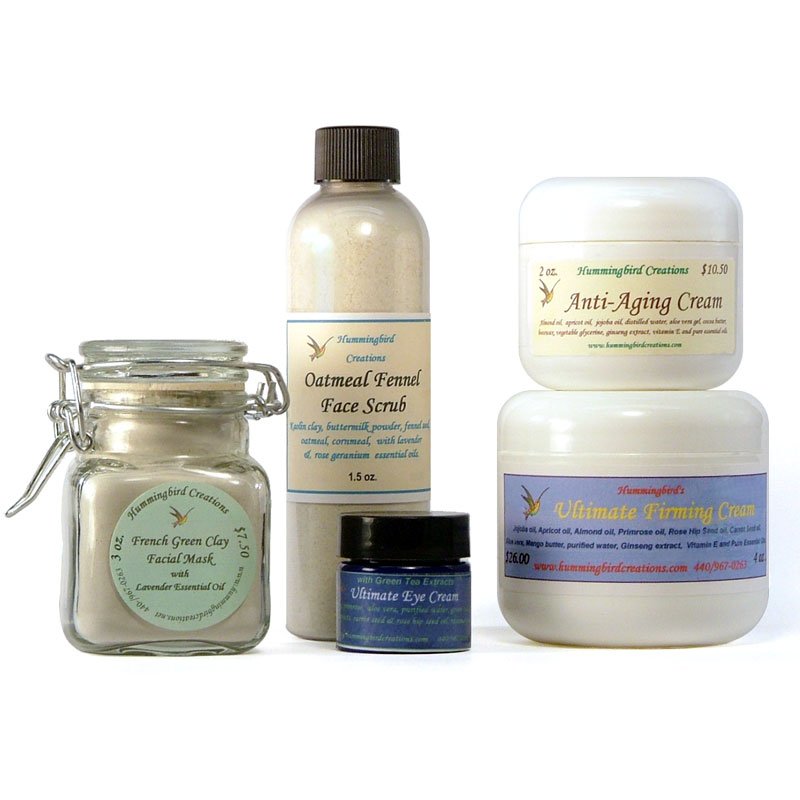Are your skin care products toxic?
DID YOU KNOW……??
The FDA is tasked with the job of ensuring public safety from unscrupulous or negligent manufacturers, but according to the FDA’s website:
“Cosmetic products and ingredients are not subject to FDA premarket approval authority, with the exception of the color additives.”
Compared to the European Union, which has banned more than 1,300 chemicals per the EU Cosmetics Directive, the FDA has only banned or restricted the use of 11 such chemicals. This is despite known toxic ingredients commonly found in cosmetics, such as lead, mercury, formaldehyde, and what regulators call ‘chemicals of concern.” In May 2017, legislation was introduced into Congress that would increase the safety of U.S. consumers, however the Personal Care Products Safety Act is estimated to have only a 2% chance of being enacted. Self-education on what to avoid is the best way to become your own health and safety watchdog. Don’t let toxic ingredients undermine your self-care products!

Petrochemical Infusion
What we put on our skin goes directly into our bodies, without benefit of the filters of the digestive tract and liver. Unlike nutrients in food which undergo a lengthy distillations process before being released into the bloodstream, products we apply to our skin are immediately absorbed into the blood, lymph, and circulatory systems.
Mineral Oil
Mineral oil, a crude oil derivative commonly used in massage oils, is one such petrochemical linked to at least two dozen adverse health effects. Much like plastic wrap, mineral oil forms a barrier over the skin, preventing moisture and oxygen exchange and contributing to cellular breakdown. Regular use of mineral oil on the skin speeds aging by slowing cellular renewal, and damaging collagen and connective tissues. While the common argument for mineral oil’s safety is that it can’t be digested by the body and is therefore inert, the reality is these petrochemicals are absorbed into tissues where they stay in organs and fat cells. A truly disturbing autopsy study from 1985 found that 48% of the livers and 46% of the spleens of the 465 autopsies analyzed showed signs of mineral-oil induced lipogranuloma (a nodule of necrotic, fatty tissue associated with foreign-body reactions and inflammation linked to a fatty substance.)
A 2011 study on 142 women who voluntarily underwent C-sections found that mineral oil saturated hydrocarbons (MOSH) had accumulated to detectable levels in both body fat and breast milk samples. Age was the most significant causal factor, leading researchers to conclude that MOSH accumulated in the body over time and is biopersistent, meaning not routinely excreted or expelled. Other causal factors affecting MOSH accumulation included frequency of use of sun creams, lipsticks and hand creams in daily life.
Another troubling study from 2009 published in the Journal of Investigative Dermatology, found that moisturizing creams containing mineral oil significantly increased both the likelihood and size of developing tumors in high-risk (UVB-exposed) skin.
The presence of petrochemicals in our lives should not be underestimated. Our food supply is now saturated with ‘food-grade’ petroleum, including fruit and vegetable waxes, softener used in candy, fertilizers used to grow crops, flavor and texture additives, solvents used to extract nutrients, such as soy lecithin, and plastic from food containers leaching into food.
Parabens
However, mineral oil isn’t the only petrochemical toxin we need to self-police when it comes to body lotions. Parabens are endocrine-disrupting, estrogen-like petrochemicals used in many food, drug, and personal care products to prevent bacterial growth. While petroleum distillates such as mineral oil are known carcinogens, the World Health Organization lists parabens as ‘low risk’ due to the low potency. What researchers are finding, is that our broad exposure across countless consumer products, environmental contaminants, and industrial farming practices more than makes up for low-doses. Parabens have been found in concentrations 1 million times higher than natural estrogen levels found in human breast tissue.
The 2012 report by the Genesis Breast Cancer Prevention Centre discovered five paraben esters in human breast tissue samples collected from the underarm area of mastectomy patients. Parabens consistently clustered at the armpit site, leading researchers to conclude that paraben concentrations were from topical application of products such as deodorant and skin lotions and creams.
A 2917 study on paraben esters found them intact in healthy human tissues, leading researchers to conclude that parabens “penetrate human skin intact without breakdown…in healthy human subjects. There is hope for health-conscious individuals who want to rid the body of this toxic build-up: start sweating! Sweating is one of the body’s primary methods of detox, and our armpits work overtime! This delicate area is uniquely sensitive, serving as a gateway for toxins on their way in and out of the body. Another reason to safeguard what penetrates armpit skin is the presence of lymph nodes. If skin is the gate, the lymphatic system is the highway, shuttling toxins out of the body along lymphatic pathways. This makes getting a massage with chemical-filled lotions even more dangerous. Massage stimulates the lymph, and the rub-down works oils deep into the skin, directing toxins into the bloodstream and sensitive surrounding tissues.
If You Won’t Eat It, Don’t Use It!
Look for the following vegetable oils when shopping for your beauty and health products: Coconut, Sesame, Flaxseed, Jojoba, Sweet Almond, Avocado, Olive, and Grapeseed, and then look for plant Essential Oils, and herbal infused oils and extracts. These are the safe alternatives to use on our skin and have the healing properties from mother nature that our bodies need.
This is why Hummingbird Creations has never used petroleum products, parabens or any other artificial ingredients in any of our many health and beauty products. All our ingredients are listed on the labels of each and every product we offer. And we always welcome any questions regarding how we make our products.
Check out our many wonderful and safe items that we offer that not only work as well as ‘over-the-counter’ health and beauty items, but at very affordable prices. What’s not to love!








